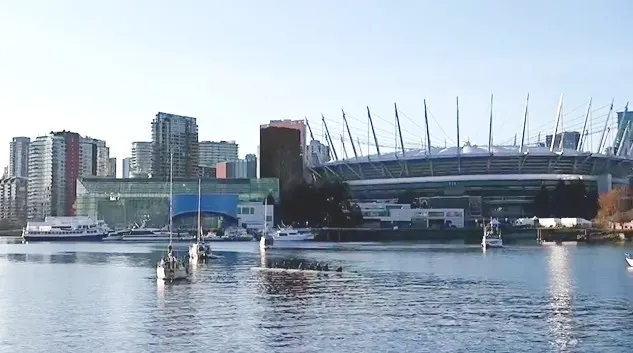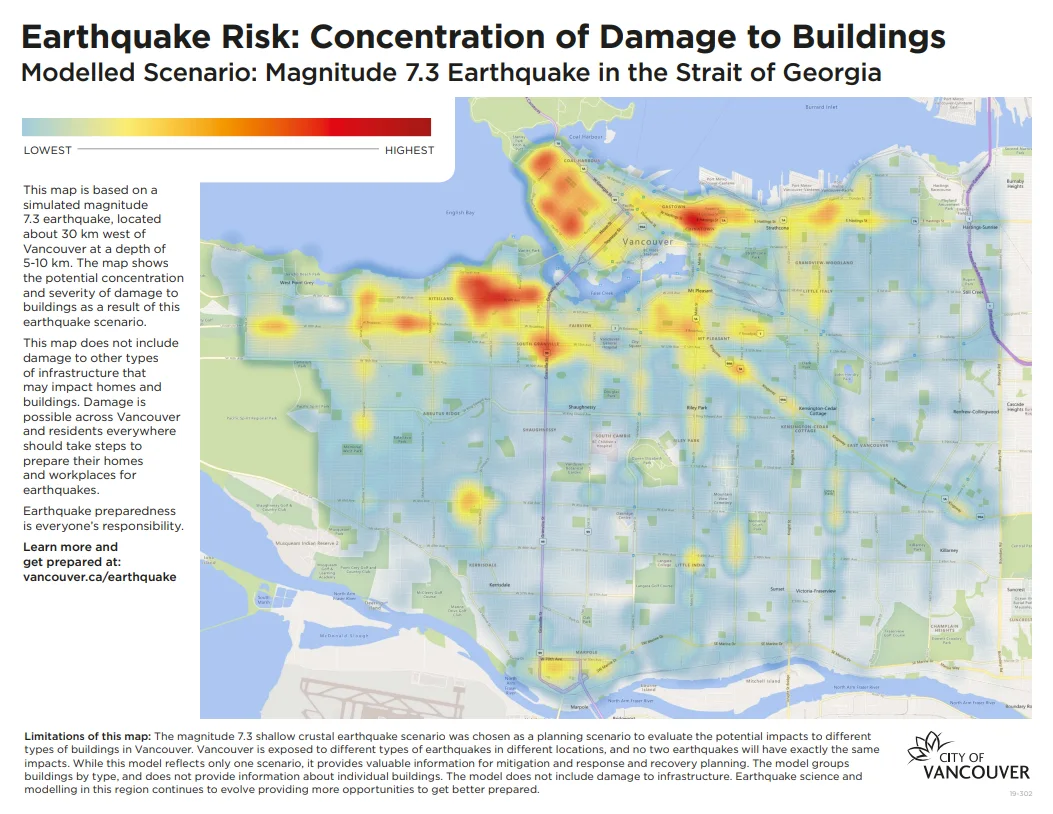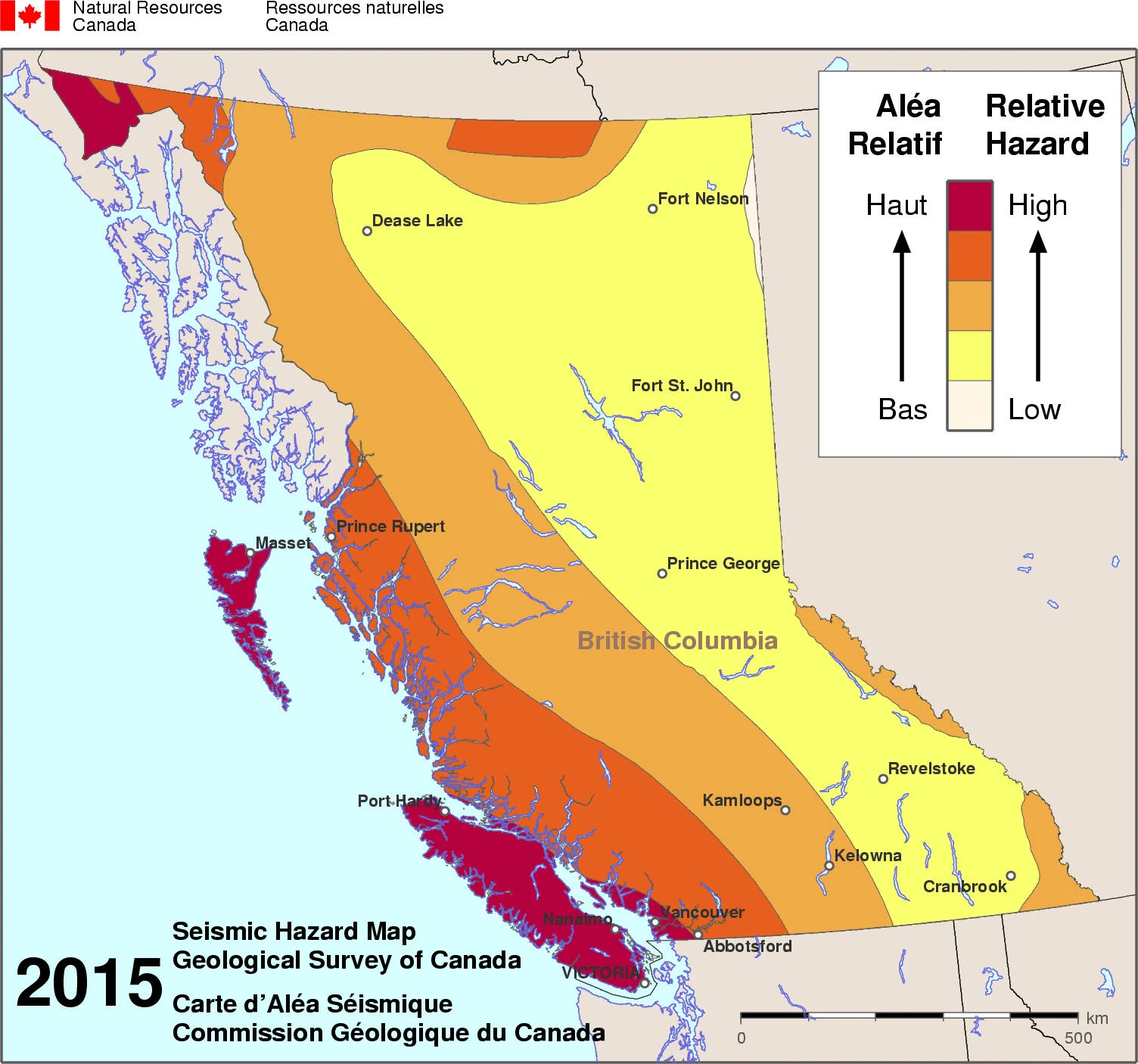
Why these parts of Vancouver would be hit hardest by major quake
One in nine buildings may be unusable in some of Vancouver's most densely populated areas after a major earthquake, according to a seismic survey released by the city.
Kitsilano, Chinatown, South Granville, and the West End would be hit the hardest by a 7.3 magnitude earthquake. Pockets of damage are also highlighted in the Point Grey, Strathcona, Mount Pleasant, and Marpole areas.

Image courtesy City of Vancouver.
A lot of the buildings in these areas are older -- built before the 1990s -- and made with wood or brick frames, making them less resilient to tremors.
Katie McPherson, the Chief Resilience Officer at the City of Vancouver, says that understanding where damage is likely to occur will help the city understand both the response needed in the event of a major quake, but also to guide decisions on making stronger infrastructure.
SEISMIC ACTIVITY IN BRITISH COLUMBIA
Coastal British Columbia is a hotbed of seismic activity, home to both the Queen Charlotte fault -- called 'Canada's equivalent of the San Andreas fault' by Earthquakes Canada -- and the Cascadia subduction zone, which runs from the northern tip of Vancouver Island to Northern California.

Image courtesy Earthquakes Canada.
The Cascadia subduction zone, where the Juan de Fuca plate is sliding beneath the North American plate, currently generates about 300 small earthquakes a year in southwestern British Columbia and, on average, a once-per-decade large quake. At present, the plates are believed to be locked together, and it's the crust being squeezed that's responsible for the current tremors. At some point, however, they will slip free again, and seismologists expect this will generate a massive offshore earthquake in line with the 9.2 magnitude quake that struck Alaska in 1964.
Sources: Earthquakes Canada | CBC |









